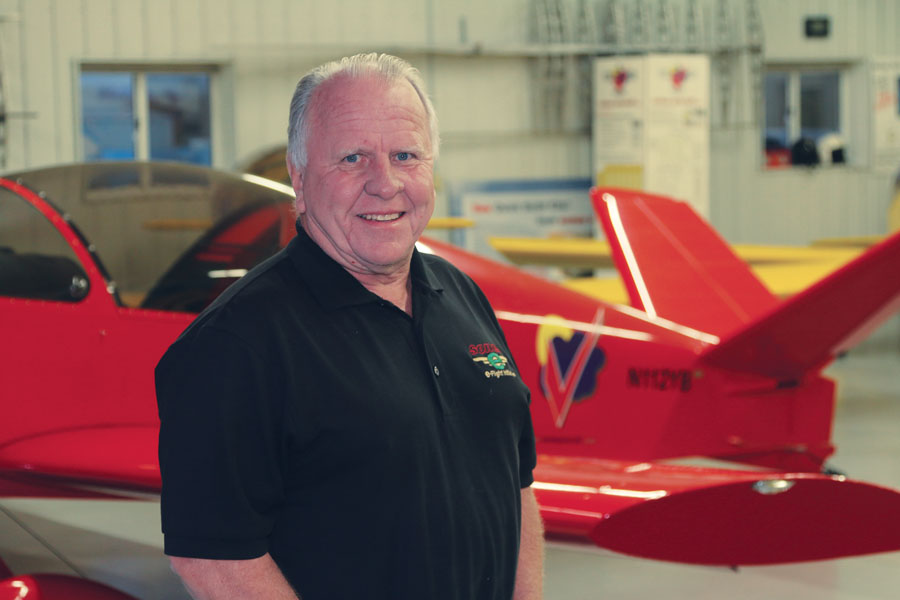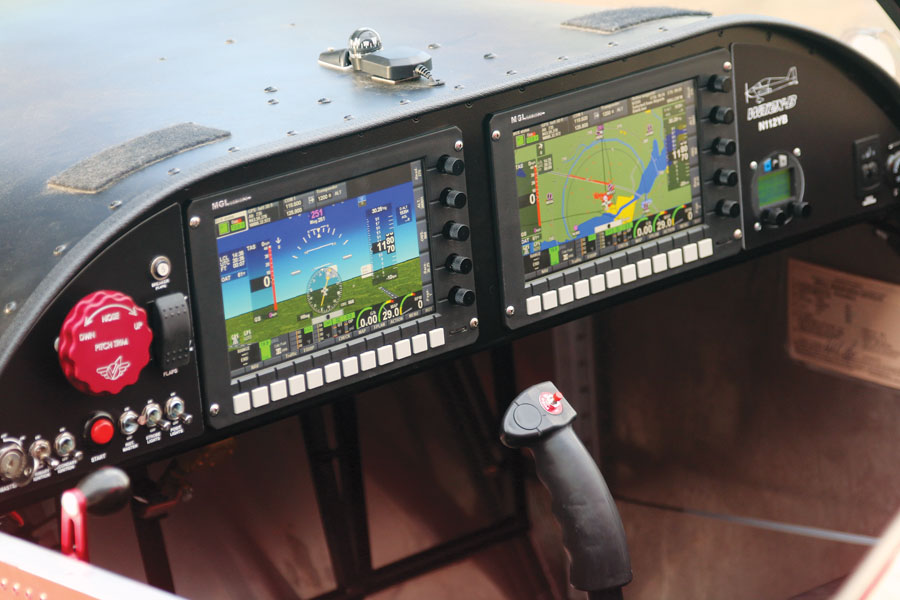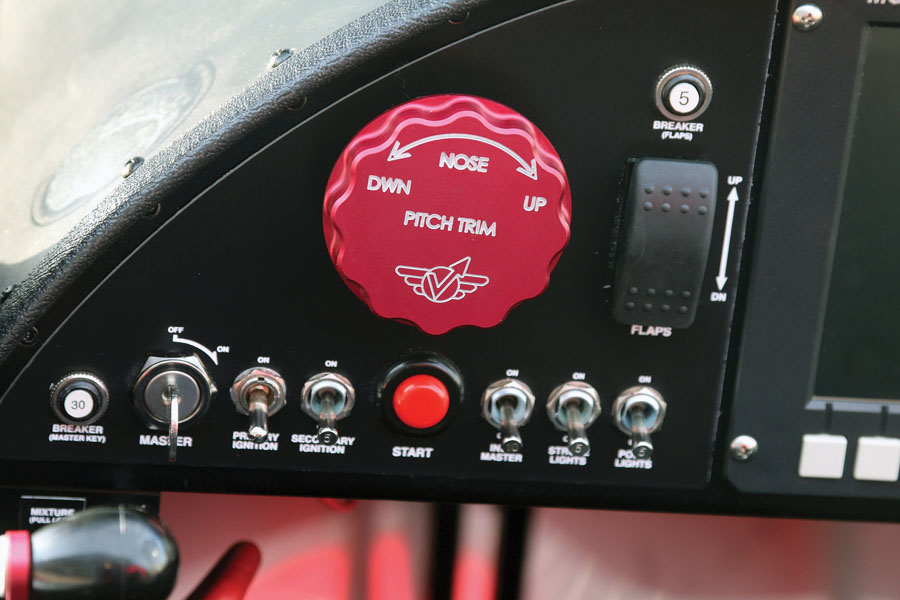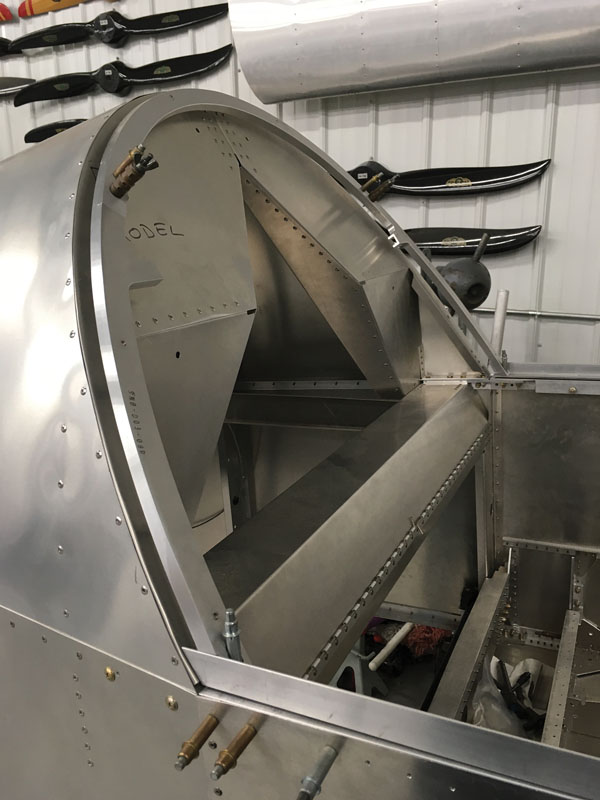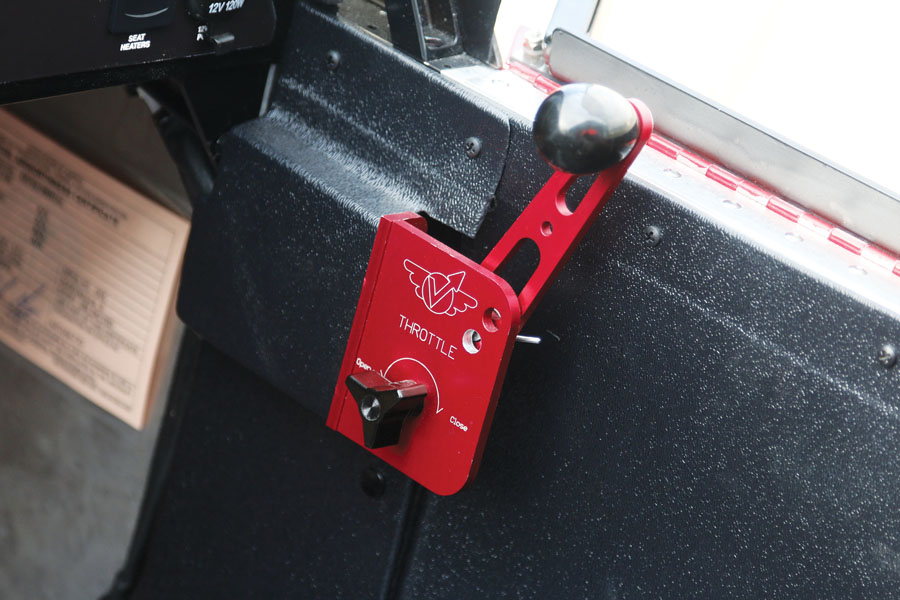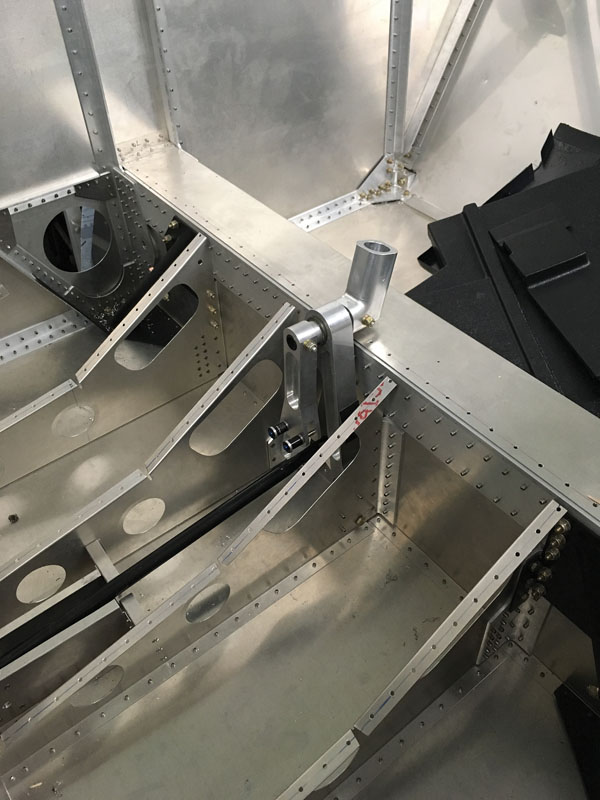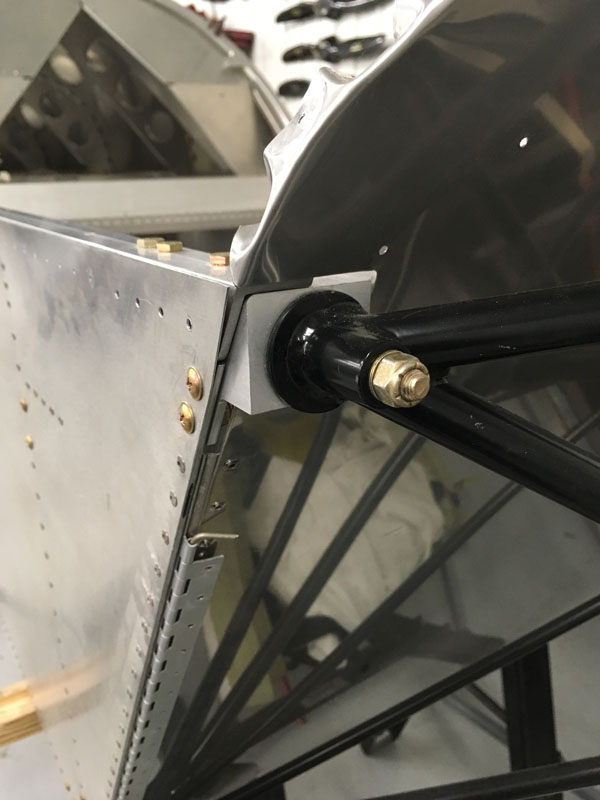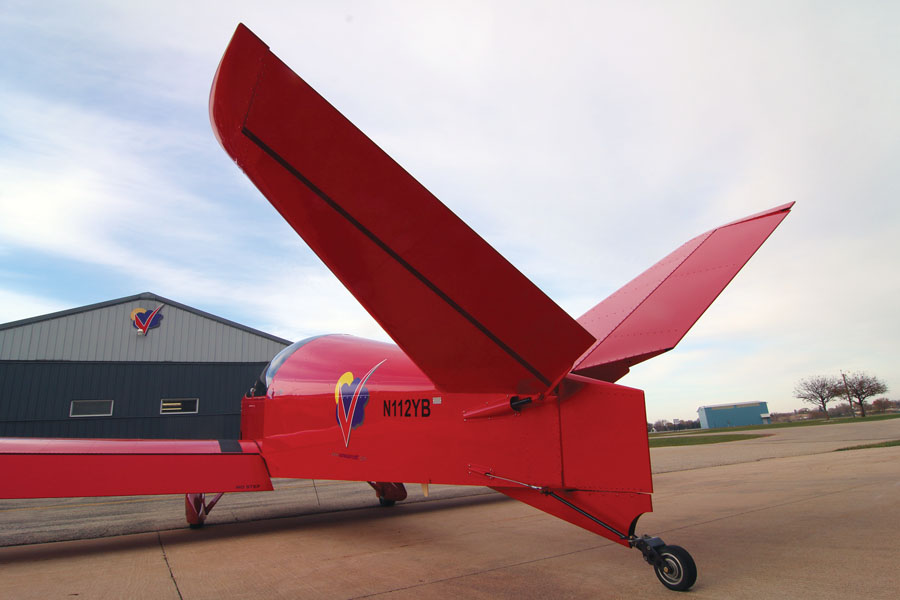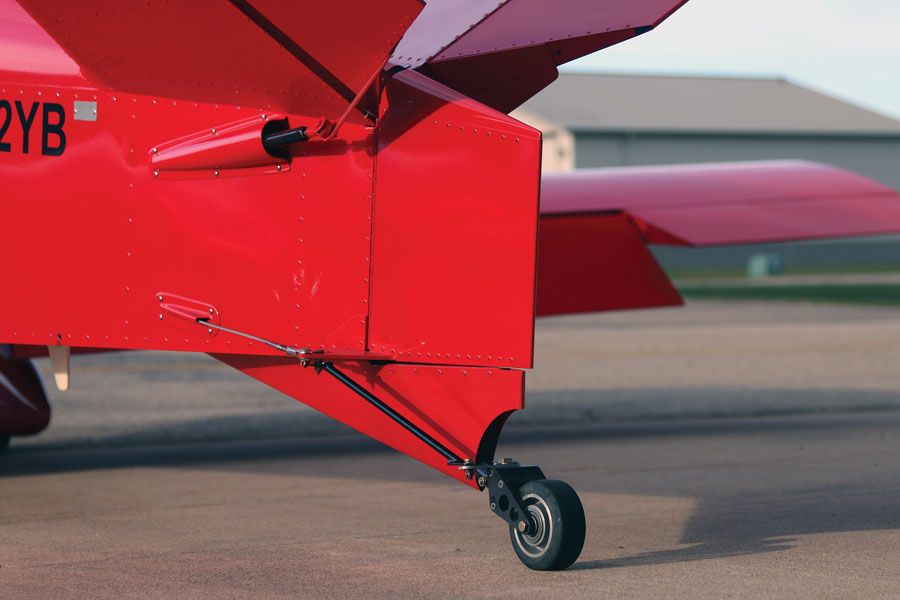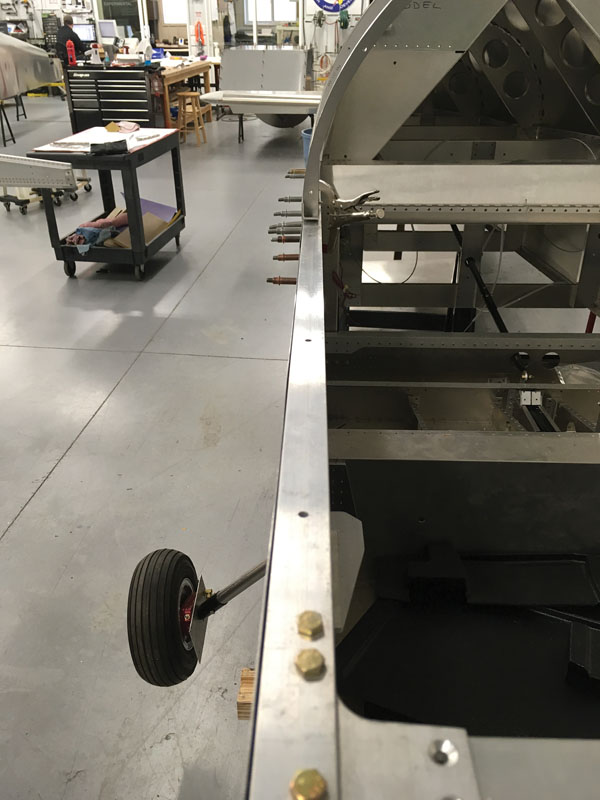I could tell something was different when I walked up to the airplane. Aside from it being bright red instead of the standard Sonex yellow, the new Waiex B-Model (also available as a straight-tailed Sonex) just looked larger. Not a lot larger—just where it counts—in cabin room, seating position, and up front, where you hang the engine. With a wider nose comes a wider firewall and bigger cowl, all signaling an opportunity for those looking for more power. And when was the last time you found a pilot that asked for less?
The Sonex line of light, simple aircraft includes a number of different models, all going back to the original two-seat, side-by-side Sonex, powered by the AeroVee engine—a VW produced by AeroConversions, a sister company to Sonex. Simple in construction, featuring pulled rivets and no compound aluminum curves, the original Sonex could be purchased as a quickbuild kit, traditional kit, or simply as a set of plans, with any of the more complex parts available from Sonex. The original design was available with a straight tail (Sonex) or a Y tail (Waiex), and as either a trike or taildragger in either version.
The B version is the first major upgrade to the basic Sonex/Waiex design, and Sonex has been busy selling kits since its introduction at Sun ‘n Fun in April 2016. While we were visiting the factory, we saw parts and quickbuild components for the new version, and it was easy to spot the improvements.
Looking for Changes
The first thing you notice when seeing the Waiex-B is that the nose looks wider—and that’s because it is. The basic design change to the fuselage included taking out the taper of the fuselage from the rear of the seat to the firewall. The original airplane tapers about eight inches (total) in that distance, making for a narrower firewall and limiting the types of engines that will fit under the cowl. The new shape enhances the design in a number of ways, making it simpler to build, as well as providing more room.
When you get to the cockpit, anyone familiar with the original design will notice a couple of changes right off the bat. First, the instrument panel is taller, making it possible to use large, modern EFIS displays that just wouldn’t fit in the original panel. In addition, the panel is now vertical, whereas the original was sloped. This will help prevent glare on screens, which was sometimes a problem with the original design that was first built in the age of steam gauges.
As with most Sonex aircraft, the switch panel is simple and dominated by the large pitch trim knob. You don’t really need much more than this.
The next thing an aficionado will notice is probably going to be the glareshield—a very large and long piece of structure in any Sonex. The original was a three-surface design, with crisp fore and aft corners. The new glareshield features a continuously curving sheet of metal that should build very quickly.
The rear cabin bulkhead and cross brace have been modified to allow a more reclined seat back position, thus providing more space in the cockpit.
The final significant change we saw on first inspection is the more reclined seating position, enabled by a redesign of the bulkhead behind the seat. Essentially, the main cross-member is now notched, allowing the top of the seat backs to lay a bit farther aft, placing the pilot and passenger in a comfortable semi-supine position. The new seat is also shaped a bit differently due to changes in the substructure ribs, and the use of a single center stick frees up even more cabin room, making the entire cockpit seem open and airy.
The single center stick is something that has been done before on Sonex aircraft, and we immediately liked the idea. In fact, it feels like a right-hand sidestick to the pilot or a left-hand sidestick to the passenger. Either way, it is easy to control and frees up space between the legs, making ingress and egress easier, as well as allowing occupants to shift their legs and knees in flight with a wider variety of options.
There are other refinements in the new design that are more evolutionary and come from years of production and talking with builders and pilots about what they’d like to see. One example is a new canopy latch that includes a ground position to allow better cooling while taxiing. Also note, for instance, that we haven’t mentioned the flap handle, a fixture in most Sonex aircraft. That’s because the new models incorporate an electric actuator, with a rocker switch on the panel. Flap control is precise and infinitely variable—and you won’t confuse the flap and brake handles as some do early in their Sonex flying days.
Flying the B
The prototype B-Model is a Waiex taildragger equipped with the turbocharged AeroVee engine producing about 100 hp. When we flew it, the airplane had just come out of Phase 1 testing and had only been flown by Joe Norris, the factory test and transition pilot. Our flight was, in fact, the first time it had been flown with two people on board, so it was a chance for Joe to see just how it would perform for those wanting to take along a passenger.
The cockpit was comfortable for the two of us, both being of average width (the usual limiting dimension in small side-by-side aircraft), and we had plenty of headroom with the large swing-over canopy. I used an extra cushion behind my back to adjust for leg length to the rudder pedals, since the seats and pedals are not adjustable. Visibility over and around the nose was good.
The airplane uses a single brake lever, along the sidewall and below the throttle, for speed control on the ground. With the throttle at a touch above idle, the plane will move without brakes, so for taxiing, you set the throttle and then forget it, modulating speed with the brakes. Steering is via the rudder pedals and the non-swiveling tailwheel, so plan ahead to avoid getting yourself into a corner from which you can’t escape because of the inability to just kick the tail around. Some Sonex builders have modified the design with a swiveling tailwheel and differential brakes, so this is possible if you feel the need.
Like all of the AeroVee-equipped craft from Sonex, the start-up is simple: fuel on at the tank, master on, then ignitions and hit the switch right after pushing the mixture control in. You don’t want to leave the mixture in without the engine running, or fuel will leak from the AeroInjector throttle body. It’s simply something to get used to. The engine starts right up without any magic and sets into a nice idle—although it does turn “backwards” compared to most U.S. aircraft engines—so don’t be surprised.
Runup before takeoff is easy: check controls, do a mag check, make sure engine parameters are in the green, and you’re ready to go. Norris gave a few target manifold pressures and speeds to shoot for, with takeoff power being about 40 inches and climb down around 35, with a speed of about 100 mph working out best for him so far. Cruise was pegged at about 30 inches and 125-135 mph. With the airplane so recently out of Phase 1, but still in envelope expansion, speeds and performance numbers are still being determined, so expect some tweaking before customer planes start flying.
The seat ribs have been changed and beefed up, with the new seat pan riveted in place. The center stick is mounted in a billet-machined hinge assembly, and is much simpler than dual sticks.
Initial acceleration with the turbo is better than with either normally-aspirated Waiex we have flown, with good directional control. A little forward stick raises the tail, and the airplane flies itself off easily. Establishing the initial climb attitude showed light pitch forces, but the airplane is stable. Visibility over the nose was fine in the climb attitude, but we still found ourselves kicking the nose out of the way every once in a while to make sure no one was sneaking around ahead of us. This is, after all, Oshkosh airspace. It is easy to forget that it is much less busy outside of that one week of the year.
Up and Enjoying
Once clear of the airport traffic area, we leveled off above the colorful fall Wisconsin landscape and felt the airplane out a little. Those familiar with the original Waiex will probably find very little difference in handling with the B-Model, and we certainly didn’t. The controls are light and effective, and turns with bank angles up to and including steep turns were easy. The sight picture is a little different with the new glareshield design, but finding your landmarks for varying degrees of bank to attain level turns doesn’t take long.
The engine-mount attach points are beefed up over previous designs, and allow larger engines than the original models.
I found that the airplane stayed in trim almost independent of attitude and speed. In other words, the untrimmed forces were light enough that it was just as easy to hold level flight by hand as it was to turn the trim wheel located on the left side of the panel. The trim is a spring-bias system, and the airplane would be simple and easy to fly if it wasn’t working at all.
The factory prototype B-Model is powered with the turbocharged AeroVee engine, providing a nice boost in horsepower.
The airplane was stable but light in pitch as we tried a little bit of slow flight, then pulled back on the stick to sample the stall characteristics. With a gentle pull to the bottom of the green arc, all we got was some buffet and an increased rate of sink. With a more aggressive pull to the power-off stall, we got a break and a roll off to the right as the nose dipped. With flaps out, we felt a slight tendency for the stick to become neutrally loaded as the nose came up—an indication that there is still some work to do on fully defining the CG envelope. Pilots and passengers sit aft of the CG, so adding the extra person did drive us to the back of the envelope.
While the prototype B-Model is a Waiex with the Y tail, it is also available as a straight-tail Sonex.
We didn’t give aerobatics a try, despite the airplane being stressed for them, as we had no parachutes on board and there were two of us. But nibbling at the edges with a few steep turns, a chandelle and a lazy eight showed that—like the other Sonexes—the B-Model should be fun for those who want to explore a few unusual attitudes now and again.
Visibility from the cockpit is as good as on all of the other Sonex aircraft. There is more than enough light in the cockpit to let you know that you are really part of the sky. The high canopy is roomy enough for pilots of just about any size. You’d really have to be supersized to hit your head on the Plexi in these airplanes. The enlarged panel was accomplished without giving up thigh or knee room, and I’d give serious consideration to the center stick instead of the traditional two-stick configuration.
Back to Earth
A quick call to Oshkosh tower had us headed back in on a right downwind for Runway 27, along with a few other airplanes taking advantage of the uncharacteristically beautiful November weather. Extended out over the lake on downwind, I kept the speed up a little and the flaps retracted until we were feet dry on the final approach course. I’m just a little superstitious about flying a new airplane over a cold lake, I guess. But it was easy to reconfigure and drop flaps to slow down to the recommended 90-mph approach speed. The flaps are a bit slow in deploying and retracting, but only in comparison to manual flaps in similar Sonex aircraft. Nothing happened terribly fast on approach, and we landed with both partial and full flaps on the couple of landings we did.
Control-rod exit fairings are now made out of vacuum-formed plastic, a nice kit addition that saves hours of metal forming by builders.
The airplane does not sit terribly nose high on the runway, and the difference between approach and landing attitudes is not as great as you might be used to in a Cub-like airplane. Don’t over-flare your first time out, or you might be sitting on the tail first. A gentle flare worked just fine for both landings, and directional control was positive all the way through. For those used to toe (or heel) brakes, it can take a little retraining of the muscles to use a hand brake, but it works just fine after a few minutes of using it.
The new cabin longerons are square stick instead of angle and maintain a constant cabin width to the firewall.
Evolution, Not Revolution
Aircraft design is, and always has been, an evolutionary process. Improvements come in stages, and no design is ever truly finished. The B-Model Sonex and Waiex are good examples of this. While the original designs are solid and have sold in good numbers, Sonex Aircraft, LLC was not content to sit on their laurels and continue with the same product forever. The B-Models are the result of innovations from numerous people, including builders around the world. While the factory came up with the major design changes, many of the small ideas—like the secondary canopy latch that allows for cooling on the ground—came from the field. It was easy for Sonex to incorporate these changes while they were modernizing the design.
With plenty of room for a larger EFIS and more of everything on the panel, the B-Model may sell better to those equipping for serious cross-country flight. The added comfort of the new seating position and wider forward fuselage will also support that goal admirably.
I found no downside to the modifications that make the model a B, and unless you already have an original started and well along (like we do in our own shop), there are no good reasons I can think of not to buy the B. Check it out the next time you see one at a fly-in or show, or drop in on Sonex to try one on for size. A comfy cockpit with more options—how can you beat that?


